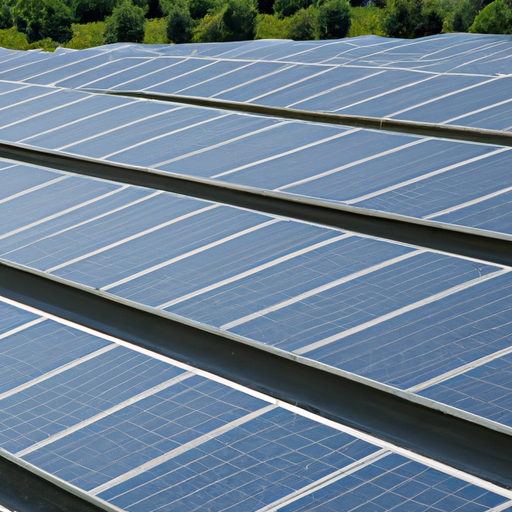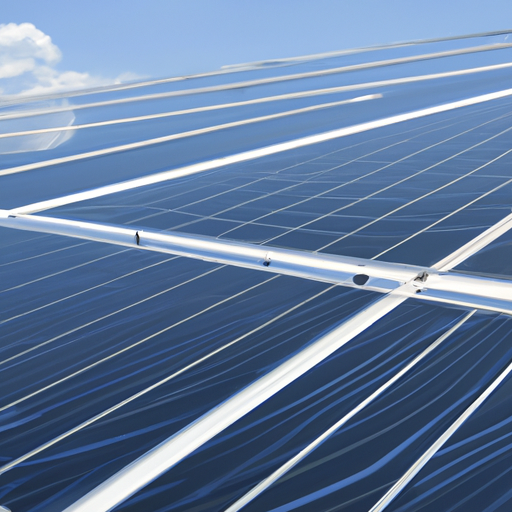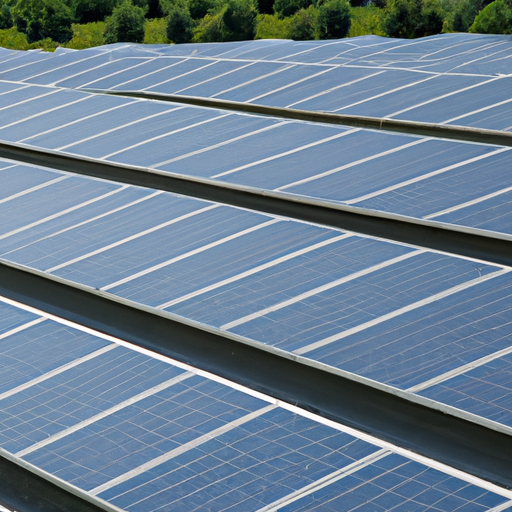

So, you’ve made the responsible decision to invest in a portable solar panel system. Good for you! Not only are you saving money on energy bills, but you’re also reducing your carbon footprint. But now that you have your solar panels set up, you might be wondering, “How do I maintain and care for them?
Well, let me tell you, taking care of solar panels is actually quite simple. First and foremost, make sure to keep them clean. Just like any other surface, solar panels can accumulate dirt, dust, and debris over time, which can reduce their efficiency. You can clean them with a soft cloth or a sponge and some soapy water. Just be sure to rinse them thoroughly and avoid using abrasive materials that could scratch the surface.
Secondly, keep an eye out for any shading issues. Solar panels need direct sunlight to perform at their best, so it’s important to regularly check for any obstructions that may cast shade on your panels. Trim any overhanging branches or nearby vegetation that could block the sunlight. And if you notice any cracks or damage to the panels, be sure to get them repaired as soon as possible to prevent further issues.
In our upcoming article, we will dive even deeper into the maintenance and care of solar panels in a portable solar panel system. We’ll cover topics like monitoring your panel’s performance, checking for wiring issues, and protecting your panels during extreme weather conditions. So, stay tuned for more valuable information on how to make the most out of your solar panel investment!


Inspecting the Solar Panels
Cleaning the Solar Panels
One of the most important tasks in maintaining and caring for solar panels in a portable solar panel system is cleaning them regularly. By keeping the panels clean, you ensure that they operate at their maximum efficiency.
To clean the solar panels, you’ll need to gather a few tools and materials. First, choose a cleaning solution that is specifically designed for solar panels. Avoid using harsh chemicals or abrasive cleaners, as they can damage the panels. Next, gather soft brushes or sponges that won’t scratch the surface of the panels. Finally, you’ll need a hose or bucket of water for rinsing.
When cleaning the panels, start by wetting them with plain water to remove any loose dirt and debris. Once they are wet, apply the cleaning solution to the panels and use the soft brushes or sponges to gently scrub away any remaining dirt. Be sure to cover all areas of the panels, including the edges and corners. After scrubbing, rinse the panels thoroughly with clean water to remove any residue from the cleaning solution.
Checking for Physical Damage
In addition to cleaning the solar panels, it’s important to regularly inspect them for any physical damage. This includes cracks, chips, or other signs of wear and tear that could affect their performance.
To check for physical damage, start by visually examining the panels for any visible cracks or chips. If you notice any damage, it’s important to address it as soon as possible to prevent further deterioration. You should also inspect the frame and mountings of the panels, as these can sometimes become loose or damaged over time.
Another area to focus on when inspecting the solar panels is the cables. Look for any signs of loose or damaged cables, as these can interfere with the flow of electricity and impact the performance of the panels.
Inspecting Electrical Connections
To ensure the proper functioning of your portable solar panel system, it’s crucial to inspect the electrical connections regularly. Loose or faulty connections can lead to a decrease in the system’s efficiency and overall performance.
Start by checking for any loose connections between the solar panels and the wiring. Make sure all connections are secure and tight. Next, inspect the wiring and terminals for any signs of damage or corrosion. If you notice any issues, it’s important to address them promptly to prevent further damage.
Finally, testing the voltage output of your solar panel system is a crucial step in inspecting the electrical connections. This can be done using a multimeter, which measures the electrical voltage. Compare the measured voltage with the expected output to ensure that your system is operating at its full capacity.
Monitoring Performance
Using a Solar Panel Performance Monitor
Monitoring the performance of your solar panel system is key to identifying and troubleshooting any issues that may arise. A solar panel performance monitor provides real-time data on the system’s energy production, allowing you to make any necessary adjustments.
To use a solar panel performance monitor, you’ll need to install the monitoring system and connect it to your portable solar panel system. The monitor will collect data on the energy production of your panels, including the amount of electricity generated and the voltage output.
Recording and Analyzing Data
Once you have a solar panel performance monitor in place, it’s important to record and analyze the data it provides. Keeping a log of your solar panel’s output over time allows you to identify trends, track performance, and compare the data with the expected performance.
By comparing the data with the expected performance, you can quickly identify any discrepancies or anomalies that may indicate a problem with your solar panel system. This allows you to take proactive measures to rectify the issue before it affects the overall performance of your system.
Identifying and Troubleshooting Issues
Monitoring the performance of your solar panel system and analyzing the data collected can help you to identify and troubleshoot any issues that may arise. By recognizing decreased performance or unusual fluctuations in energy production, you can investigate the possible causes and implement solutions.
Common causes of decreased performance in solar panel systems include shading, dirt or debris buildup, and faulty electrical connections. By carefully examining the data collected by your solar panel performance monitor, you can pinpoint the exact cause of the problem and take appropriate action to resolve it.


Maintaining Battery Storage
In addition to caring for the solar panels themselves, it’s important to also pay attention to the battery storage in your portable solar panel system. The battery is responsible for storing the energy generated by the panels, so it’s crucial to keep it in good condition for optimal performance.
Inspecting Battery Terminals
Regularly checking the battery terminals is an essential part of maintaining the battery storage in your portable solar panel system. Look for any signs of corrosion or loose connections and address these issues promptly. Clean the terminals if necessary and ensure that they are tightly secured to prevent any potential problems.
Checking Battery Charge Levels
Monitoring the charge levels of your battery is crucial to ensure that it is operating at its full capacity. Use a battery charge level monitor to regularly check the charge levels and make any necessary adjustments. If the charge levels are consistently low, it may indicate a problem with either the solar panels or the battery itself.
Performing Regular Maintenance
Performing regular maintenance on your battery storage is essential to keep it in good working condition. This includes cleaning the battery regularly to remove any dust or debris that may accumulate. Additionally, check the water levels if your battery is a wet-cell battery and top up with distilled water if necessary.
Conclusion
In conclusion, maintaining and caring for solar panels in a portable solar panel system is crucial to ensure their optimal performance. Regularly cleaning the panels, checking for physical damage, inspecting the electrical connections, monitoring performance, and maintaining the battery storage are all important steps in keeping your system running smoothly.
By following these effective strategies for solar panel care, you can maximize the energy output of your portable solar panel system and enjoy the benefits of renewable energy. So, make sure to allocate time for regular maintenance and follow the recommended practices in maintaining and caring for your solar panels.



